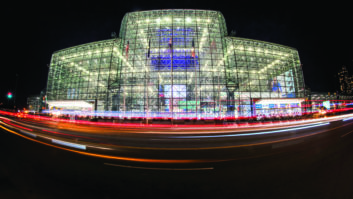The 5.9 earthquake that rocked the Mid-Atlantic region this week — and the subsequent threat of Hurricane Irene as well — helped to illustrate NAB’s push for integrating a radio chip in cellphones and other mobile devices, according to the trade association.
Some mobile phone networks were jammed in the aftermath of the quake, the strongest to hit Virginia since 1897, according to the U.S. Geological Survey.
Local radio news crews covered the events. NAB EVP of Communications Dennis Wharton send a tweet: “Cellphone down post DC quake, free and local broadcasters working. Really?” and later added: “Broadcasters as a lifeline: DC’s Emergency Management Association advises residents: ‘Stay tuned to radio and TV news updates.’
Regarding the congested cellphone networks in the Washington metro area after the quake, CTIA, the Wireless Association, said the infrastructure appeared to be intact, but because many wireless consumers were using the networks, carriers were experiencing heavier-than-normal traffic. “In these high-volume instances, there can be delays. We encourage people to send text messages and emails to contact their loved ones until volume returns to normal,” said the association in a statement. CTIA said the event showed why carriers need more spectrum.
The FCC’s Public Safety and Homeland Security Bureau is looking into the reported outages.
Wharton’s view of the cellphone network clogging: “Policymakers debating spectrum policy ought to take note that the one reliable communications service during [the] earthquake was the original wireless technology — free and local broadcasting. It’s easy to get dazzled by iPads and smartphones; but all the spectrum in the world won’t ensure reliability of the ‘one-to-one’ cellphone network architecture during an emergency. When there’s a crisis, it’s hard to replicate the reliability of the ‘one-to-everyone’ local radio and TV broadcast signal.”












